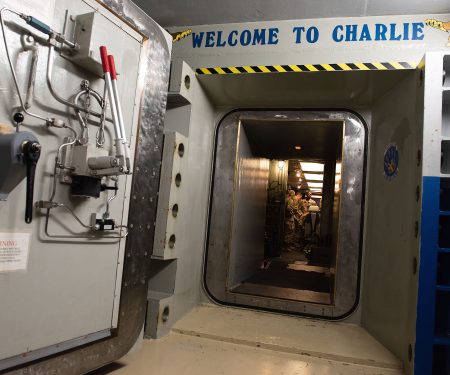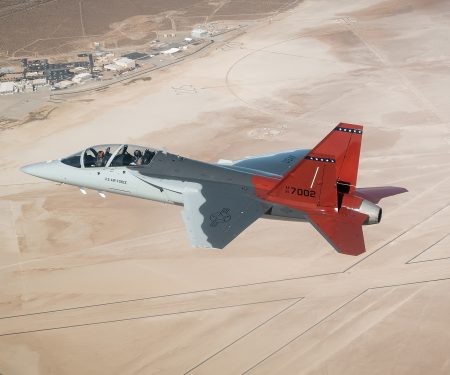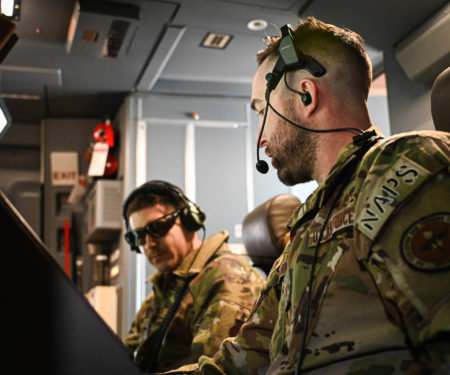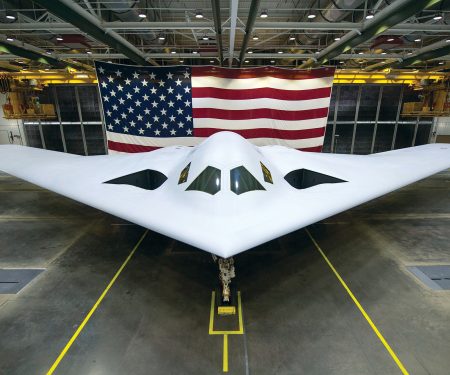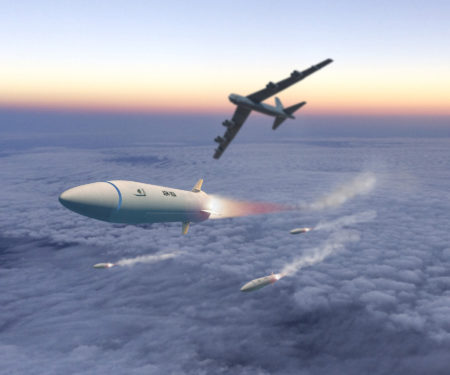Radar Sweep
To Build More Missiles, the U.S. Looks to an Ally 10,000 Miles Away
At an Australian military base on the outskirts of Sydney, an unassuming shed-like structure known as Building 215 is set to play an important role in Washington’s strategy for confronting rivals such as China and Russia. Inside, officials plan to establish the first factory outside the U.S. to help make a type of missile that’s been pivotal in the Ukraine war: Lockheed Martin’s Guided Multiple Launch Rocket System, or GMLRS. The U.S. has already sent Ukraine thousands of these missiles, which are fired out of vehicles known as Himars.
Vets, Cops Should Teach Firearm Storage Safety to Troops, Study Finds
A key element in preventing suicide among troops and veterans could be the background of the people who deliver the message, according to a recent study on the effectiveness of safe firearm storage training. The people best situated to teach firearms safety to troops are law enforcement officers, as well as other service members or veterans, according to a study by Rutgers University researchers published earlier this month.
BlackSky Awarded $23.7 Million for Air Force's Fourth Operational Imperative Effort
The Air Force awarded BlackSky Geospatial Solutions up to $23.7 million for work on Global Moving Target Engagement—one of service Secretary Frank Kendall's seven Operational Imperatives—according to a Defense Department notice. BlackSky, a space-based intelligence firm that provides on-demand imagery, analytics and monitoring, will perform research and development around Ground Moving Target Engagement, with work expected to be complete by June 15, 2028. The service awarded BlackSky $3.5 million at the time the contract was signed.
Today’s Battles Happen at the Pace of Software. The Pentagon Needs to Hit the Accelerator
The right software can dictate a battle’s outcome, and the Pentagon’s not changing fast enough to keep up, a panel of experts told lawmakers March 13. “Can commanders access data to control highly distributed forces? Can we invent new ways of fighting that put the [People’s Republic of China] on the backfoot and dissuade aggression? These are the issues that the Department of Defense must tackle if it wants to compete. And now every one of these issues now depends on software,” Daniel Patt, a senior fellow at the Hudson Institute, told the House Armed Services Subcommittee on Cyber, IT, and Innovation.
The Big AI Research DARPA Is Funding This Year
In its most recent budget request, the Defense Advanced Research Projects Agency, or DARPA, is asking for increased spending for a handful of key AI projects focused on human-machine teams, AI reasoning, and highly autonomous AIs that follow the Defense Department’s AI ethics principles.
‘I’m Disappointed’: Pentagon CIO Cybersecurity Chief Asks Industry, Where’s My AI?
For years, Pentagon leaders have argued that cybersecurity, like missile defense, was a natural place to start using artificial intelligence: high-speed, high-stakes, with too much data coming in too fast for a human mind to comprehend. But, amidst the current AI boom, have algorithms materialized that can help cybersecurity today?
Pentagon May Build a Second Track for Hypersonic Ground Testing
The Pentagon is exploring options to build a second track to test hypersonic systems that can travel at speeds above Mach 5. George Rumford, director of the Test Resource Management Center, told lawmakers this week the effort is in the study phase, but he expects adding another test track to the Defense Department’s inventory could offer a significant boost to hypersonic development efforts.
New Images of China’s J-35 Naval Stealth Fighter Could Depict Third Example
Recent imagery show what could be the third flying prototype of China's carrier-based Shenyang J-35 stealth fighter. The new visuals, which depict the aircraft from its underside, come after growing indications that the J-35 might eventually operate from China's two in-service carriers, Type 001 Liaoning and Type 002 Shandong, as well as future carriers fitted with catapults and arrestor gear, including the soon to set sail Type 003 Fujian.
Space Force Selects Startup Defense Unicorns to Update Software at Launch Ranges
A startup named Defense Unicorns has won a $15 million contract to update IT systems and software applications used to support rocket launches at U.S. Space Force ranges. The company, based in Colorado Springs, Colo., won a so-called Strategic Funding Increase, or STRATFI, agreement from SpaceWERX, the technology arm of the Space Force.
Air Force Veteran David Harris, the First Black Pilot Hired by a Major US Airline, Has Died at 89
David E. Harris, who flew bombers for the U.S. military and broke barriers in 1964 when he became the first Black pilot hired at a major U.S. airline, has died. He was 89. Harris’ family said he died March 8 in Marietta, Ga. No cause was given.
